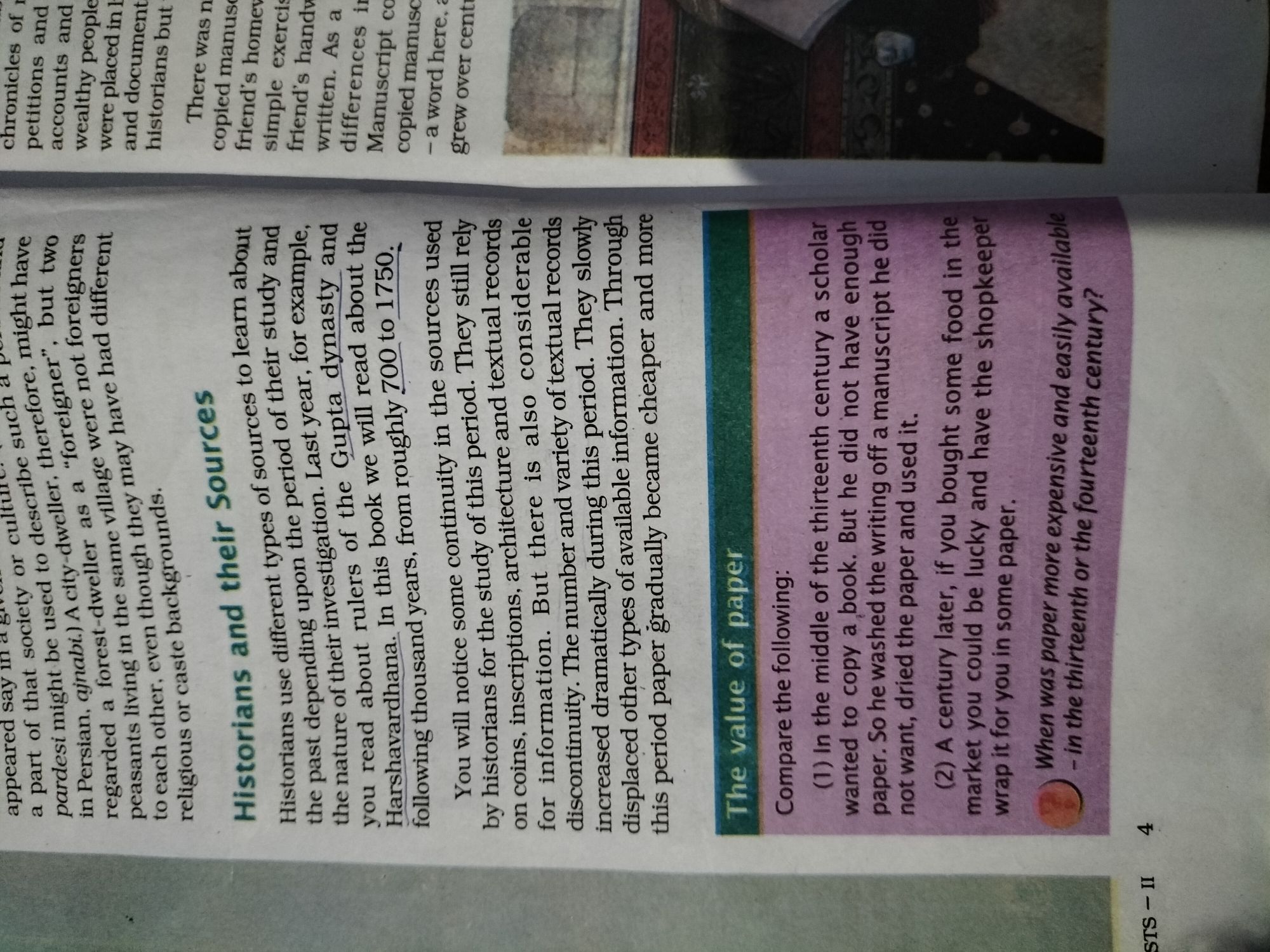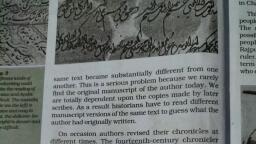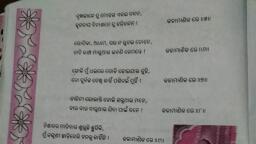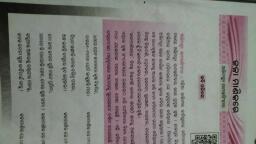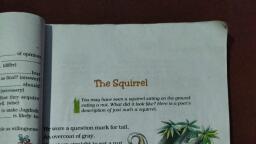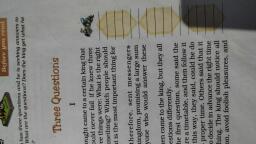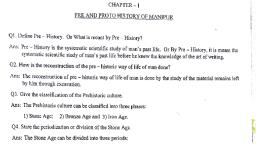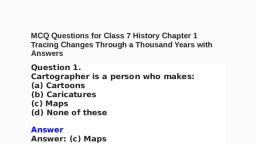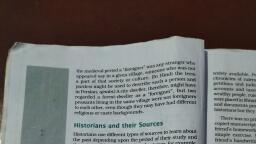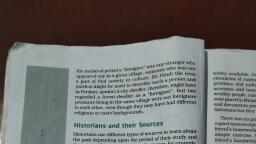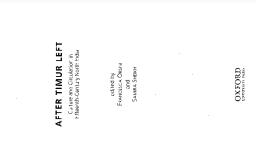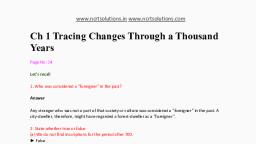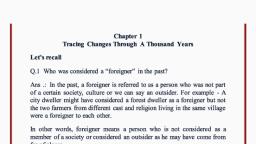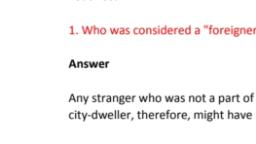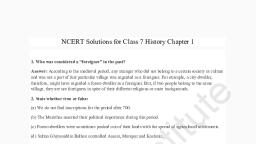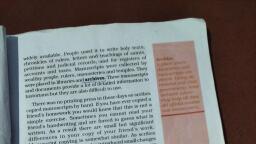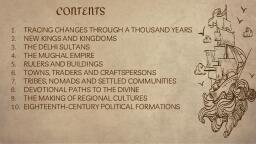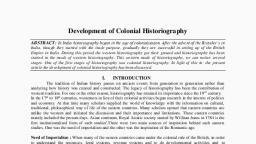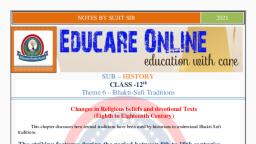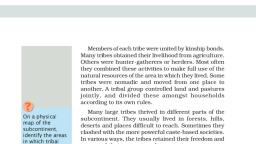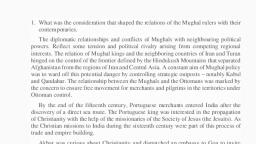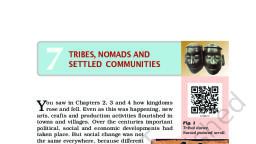Page 1 :
STS-II, appeared say in, a part of that society or cul, pardesi might be used to describe such a, in Persian, ajnabi.) A city-dweller, therefore, might have, regarded a forest-dweller as a "foreigner", but two, peasants living in the same village were not foreigners, to each other, even though they may have had different, religious or caste backgrounds., Historians and their Sources, Historians use different types of sources to learn about, the past depending upon the period of their study and, the nature of their investigation. Last year, for example,, you read about rulers of the Gupta dynasty and, Harshavardhana. In this book we will read about the, following thousand years, from roughly 700 to 1750., You will notice some continuity in the sources used, by historians for the study of this period. They still rely, on coins, inscriptions, architecture and textual records, for information. But there is also considerable, discontinuity. The number and variety of textual records, increased dramatically during this period. They slowly, displaced other types of available information. Through, this period paper gradually became cheaper and more, The value of paper, Compare the following:, (1) In the middle of the thirteenth century a scholar, wanted to copy a book. But he did not have enough, paper. So he washed the writing off a manuscript he did, not want, dried the paper and used it., (2) A century later, if you bought some food in the, market you could be lucky and have the shopkeeper, wrap it for you in some paper., 3, When was paper more expensive and easily available, - in the thirteenth or the fourteenth century?, 4, chronicles of E, petitions and, accounts and, wealthy people, were placed in E, and document, historians but, There was n, copied manusc, friend's homew, simple exercis, friend's handw, written. As a, differences in, Manuscript co, copied manusc, a word here, a, grew over cent
